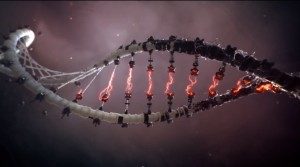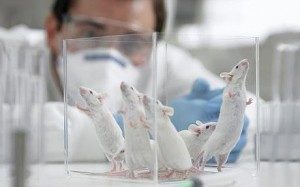 I recently brought you some discussion on the concept known as senescence, or in layman’s terms, the process of ageing. My last post on this topic was focused on transhumanism and the potential that the transhumanist movement has to deepen the divide between the social classes. That has been a contested position, but I maintain that the fruits of the fight against ageing will likely be held for the elite in our society, with unequal distribution of this artificial longevity for the rest of us.
I recently brought you some discussion on the concept known as senescence, or in layman’s terms, the process of ageing. My last post on this topic was focused on transhumanism and the potential that the transhumanist movement has to deepen the divide between the social classes. That has been a contested position, but I maintain that the fruits of the fight against ageing will likely be held for the elite in our society, with unequal distribution of this artificial longevity for the rest of us.
Today though, I wanted to focus on some of the ways senescence might actually be defeated, and even within our lifetime – if such a term could be applied to this discussion.
I previously mentioned that work is already being done in the realms of DNA/RNA telomere reinforcement, which is believed will stop or reverse the ageing process. Efforts are also being undertaken in the biotech arena, wherein researchers are attempting to develop nano-technology that would be capable of policing a person’s cellular function via their bloodstream, thereby removing ill-functioning cells and even replacing them with substitutes, whether artificial or not.
Those specific pursuits come from scientists working with the specific goals of transhumanism in mind, but there are others whose research in this venue is more…pragmatic, if you will.
Published in the science journal Cell in December of last year, is a study on the effect of varied NAD+ levels in mice, and its relation to pseudohypoxia in cellular communication. The study bore some surprising results that, despite your current confusion about what you just read, is quite impressive. I’ll explain.
 One of the leading theories about the cause of senescence is embodied in the term pseudohypoxia. Hypoxia is the term that described the process of cellular oxygen starvation, but pseuohypoxia refers to a different kind of cellular starvation. All of the cells in our bodies require certain things to remain functional and efficient. Oxygen is one of those things, obviously. Other nutrients and chemicals are also necessary, but optimal cellular function depends on maintaining very specific ratios of various compounds, and the reduction of certain compounds, NAD+ for instance, has the effect of impairing communication between mitochondria and the cellular nucleus. (NAD+ is an acronym representing the chemical compound nicotinamide adenine dinucleotide, but for the purpose of understanding what’s happening, knowing what that compound really is, isn’t necessary.)
One of the leading theories about the cause of senescence is embodied in the term pseudohypoxia. Hypoxia is the term that described the process of cellular oxygen starvation, but pseuohypoxia refers to a different kind of cellular starvation. All of the cells in our bodies require certain things to remain functional and efficient. Oxygen is one of those things, obviously. Other nutrients and chemicals are also necessary, but optimal cellular function depends on maintaining very specific ratios of various compounds, and the reduction of certain compounds, NAD+ for instance, has the effect of impairing communication between mitochondria and the cellular nucleus. (NAD+ is an acronym representing the chemical compound nicotinamide adenine dinucleotide, but for the purpose of understanding what’s happening, knowing what that compound really is, isn’t necessary.)
The paper, titled Declining NAD+ Induces a Pseudohypoxic State Disrupting Nuclear-Mitochondrial Communication During Ageing served to confirm the relatively long held idea that a decrease in the efficiency of nuclear-mitochondrial communication was at least partially responsible for the effects of ageing.[1] This study demonstrated that NAD+facilitates communication between cellular mitochondria and the cell nucleus. It turns out that this communication is imperative for regulating the body’s circadian clock, which in turn is regulated through the underlying process of senescence. As we age there is less NAD+ available and thus that communication begins to break down. The researchers in this case have found a direct correlation between the breakdown of that communication and the progress of ageing. Basically, less NAD+ means further progression of age; more NAD+ means a reversal of age.
Well sure! When you put it that way!
Once you get past the scientific mumbo jumbo, this story gets really fascinating.
 What’s truly incredible about this study is how they went about confirming the above hypothesis. Essentially, they fed NAD+ to mice, and what happened is nothing short of amazing.
What’s truly incredible about this study is how they went about confirming the above hypothesis. Essentially, they fed NAD+ to mice, and what happened is nothing short of amazing.
Within a week of administering the first dosage of NAD+ to the mice, they demonstrated a marked reversal of senescence. They got younger! The mice exhibited significantly increased muscle tone, both in musculo-skeletal structures as well as cardiovascular and respiratory structures, and their metabolic processes were found to be the same or better than that of younger mice. The scientific language used to describe this – that mitochondrial dysfunction contributes to ageing through postmitotic tissues that rely heavily on oxidative phosphorylation – is certainly a lot to take in, but in layman’s terms, what this means is that we now have a laboratory verified reversal of the ageing process.
These researchers defined what causes us to age as time passes. And they reversed it!
There have since been a number of follow-up studies and papers, most of which serve to confirm the original conclusion and in some cases even further the potential. It’s is predicted that human trials with NAD+ supplements will begin as soon as mid-to-late 2014, and while that’s an exciting prospect, there are some parts of this that are unclear, and some that are concerning.
What they’ve achieved, while impressive, is actually somewhat superficial.

Pandora’s Box – A John William Waterhouse painting
Increasing mitochondrial-nuclear communication apparently results in increased cellular function in muscle fibre, but it isn’t clear what effect that change would have on immune responses, or neural processes, or even DNA replication. How would artificially altering senescence through these means affect fertility or embryonic development? Would a person who underwent NAD+ therapy end up an old mind trapped in a young body? Would their immune systems become too efficient, ultimately attacking healthy cells, in much the same way that many autoimmune diseases already do?
Or, in keeping with my earlier remarks, what if this does prove to be an effective way to reverse the ageing process? Sounds great on the surface, but this might be an idea that looks better on paper than it does in the real world. Sure, it would be nice to keep our parents around longer, or our pets even, but there are other considerations. Biological attrition is an important, nay, an imperative part of human society. How could we, as a society already encumbered by massive unemployment, homelessness, starvation, and mental illness, ever justify prolonging the life of one while virtually ignoring the poverty of another?
It may seem, from these words and from others I’ve written, that I’m opposed to the goals of transhumanism, or to the scientific effort to combat ageing, though I assure you, I’m not. I see the value in this endeavour. I see the potential of the research. And I feel the same excitement as everyone else at the prospect of gaining control over senescence. Where I stand apart though, is in feeling free to proceed with this journey before we, as a people, are ready to deal with the repercussions. We should not be taking this step forward, not yet. Not until we have eliminated poverty, eradicated inequality, decimated illiteracy, and at least begun to be able to live among each other without violence, and jealousy, and fear of the differences between us. Our general bigotry and indifference toward the plight of others is a giant neon sign on the horizon, telling us in flashing day-glow colours, that we aren’t ready to become immortal.
“The principal and indeed the only thing wrong with this world is man.” – Carl Jung
[1] Ana P. Gomes et al. Declining NAD+ Induces a Pseudohypoxic State Disrupting Nuclear-Mitochondrial Communication During Ageing. Cell Press (Science Direct) Vol 155, Issue 7 – 19 December 2013. http://www.sciencedirect.com/science/article/pii/S0092867413015213
